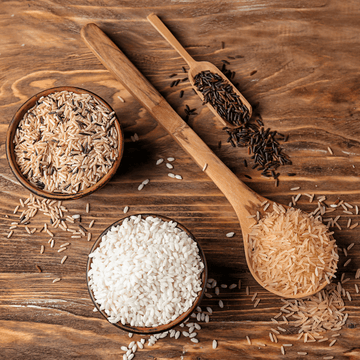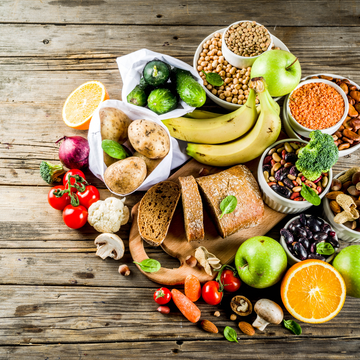Exploring the Diversity and Benefits of Rice in Your Diet
by Namita Satheesh on Nov 08, 2023

Introduction to Rice
Rice, a staple food for billions of people around the world, is not just a humble grain but a versatile ingredient that can be transformed into a wide range of delicious dishes. Let’s explore the various types of rice, delve into their nutritional value, compare white rice to brown rice, and address the common question: is rice bad for weight loss? So let's dive right in!
Nutrition in Rice:
Rice is a carbohydrate-rich food that provides energy, but its nutritional profile can vary depending on the type. Here are some key nutrients found in rice:
Carbohydrates: Rice is predominantly composed of carbohydrates, which serve as the body's primary source of energy.
Fiber: Brown rice contains more fiber than white rice due to its bran and germ. Fiber aids in digestion and helps maintain bowel regularity.
Vitamins and Minerals: Rice is a good source of B vitamins, such as thiamine and niacin. It also contains minerals like magnesium and selenium, which play important roles in maintaining overall health.
Nutritional values per 100 grams of cooked white rice:
Calories: Approximately 130-150 calories
Carbohydrates: Around 28-31 grams
Protein: Roughly 2-3 grams
Fat: Negligible fat content
Fiber: Minimal fiber content, approximately 0.5-1 gram
Types of Rice:
Rice comes in numerous varieties, each with its own distinct flavor, texture, and culinary applications. Here are some popular types of rice:
Basmati Rice: Known for its long, slender grains and aromatic fragrance, basmati rice is a favorite in Indian and Middle Eastern cuisine. It pairs well with curries and biryanis.
Brown Rice: Brown rice is a whole grain with only the outermost layer, the hull, removed. It retains its bran and germ, making it a more nutritious option compared to white rice.
Black Rice: With a striking deep purple color and a nutty flavor, black rice is rich in antioxidants. It adds an exotic touch to salads, stir-fries, and desserts.
Sona Masoori Rice: Popular in South India, Sona Masoori rice is lightweight and aromatic. It is commonly used to prepare biryanis, pulao, and fried rice recipes.
White Rice vs. Brown Rice: Which Is Better?
White rice and brown rice differ primarily in their processing. White rice undergoes milling and polishing, resulting in a more refined grain, while brown rice retains its bran and germ. Let's compare the two:
Nutritional Value: Brown rice is generally considered more nutritious than white rice. It contains more fiber, vitamins, and minerals. However, white rice is often fortified with nutrients to compensate for the loss during processing.
Glycemic Index: Brown rice has a lower glycemic index than white rice, meaning it causes a slower and steadier rise in blood sugar levels. This makes it a better choice for individuals with diabetes or those aiming to control blood sugar levels. However, when paired with fiber, protein, and fats, white rice can also yield a good blood sugar response.
Digestion: White rice is easier to digest than brown rice for most people, especially those who may have gut issues.
Is Rice Bad for Weight Loss?
The effect of rice on weight loss depends on several factors, including portion sizes, preparation methods, and overall dietary choices. While rice itself is not inherently bad for weight loss, it is energy-dense and can contribute to calorie intake. Opting for smaller portions, choosing whole grain varieties like brown rice, and pairing rice with vegetables and lean proteins can make it a part of a balanced weight loss diet.
Apart from its culinary uses, rice has additional applications that go beyond the plate. Rice bran oil, derived from the outer layer of the rice grain, is known for its high smoke point and health benefits. Rice flour is a versatile gluten-free alternative used in baking and cooking. Rice noodles and rice paper are popular ingredients in Asian cuisine, while fortified rice is a valuable resource for combating malnutrition in vulnerable populations.







